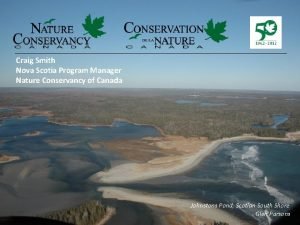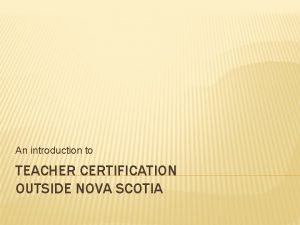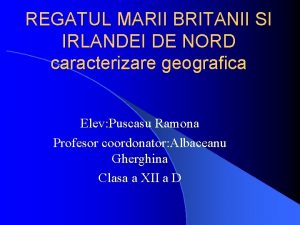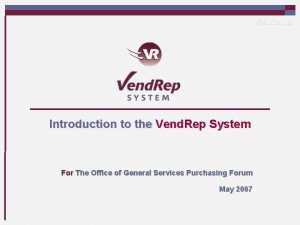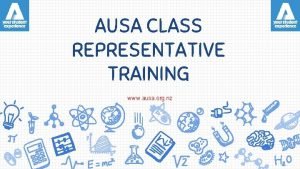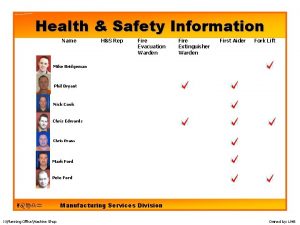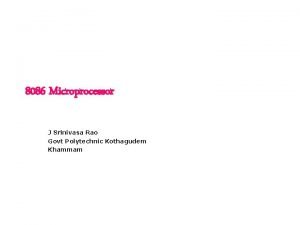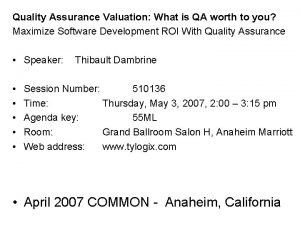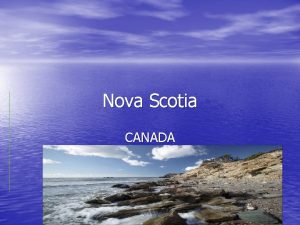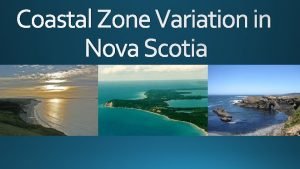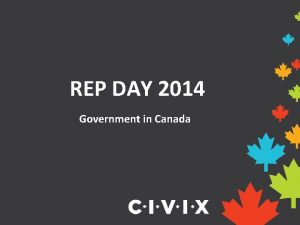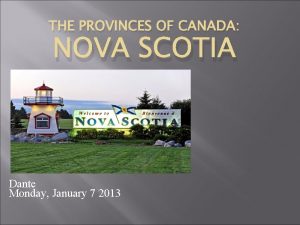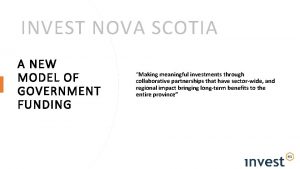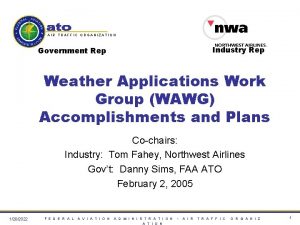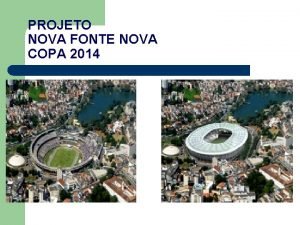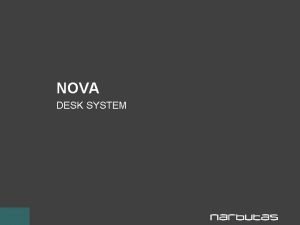REP DAY NOVA SCOTIA Government Government in Canada











- Slides: 11

REP DAY NOVA SCOTIA Government

Government in Canada • Canada is a federal state, parliamentary democracy and constitutional monarchy. • A federal state brings together a number of different political communities with a central government (federal) for general purposes and separate local governments (provincial) for local purposes. • As a parliamentary democracy, we elect members to our parliament and legislatures. • As a constitutional monarchy, Canada’s head of state is a hereditary sovereign (Queen or King), who reigns in accordance with the Constitution.

Three Branches of Government • Legislative: Comprised of elected representatives. Responsible for debating, creating and amending laws and regulations. • Executive: Comprised of the Queen represented by the lieutenant governor and cabinet (appointed elected representatives by the premier). Responsible for government operations, and implementing and enforcing laws and regulations. • Judicial: Comprised of the various courts of Canada. Responsible for interpreting the law, protecting citizens rights, and determining the corresponding punishment for people who broke the law.

Three Levels of Government • Canada is a very large country with many different needs and interests. • In order to support its citizens most effectively, government is structured into three levels: federal, provincial and municipal. • Each level has its own arrangement of elected and appointed officials, as well as a unique set of responsibilities.

Federal • The elected representative at the federal level is called a Member of Parliament (MP). • The federal legislative body has 308 elected MPs. • MPs debate and pass laws in the House of Commons in Ottawa (Parliament Hill). • The leader of the government is called the prime minister. • The Queen is represented by the governor general.

Provincial • The elected representative at the provincial level is called a Members of the Legislative Assembly (MLA). • The legislative body in Nova Scotia has 51 elected MLAs. • MLAs debate and pass laws at the House of Assembly at the Nova Scotia Legislature. The Legislature is located at Province House in Halifax. • The leader of the government is called the premier. • The Queen is represented by the lieutenant governor.

Municipal • The elected representative at the municipal level is called a councillor. • The leader of the government is called a mayor or warden. • The size of the council differs from city to town. • Councillors debate and pass legislation in the council chambers (city hall/municipal office).

Section 91 -95, Constitution • In choosing a federal form of government, the Fathers of Confederation assigned particular responsibilities to the different levels of government (Sections 91– 95, Constitution Act). • The division of powers is based on the principle of subsidiarity, in which the government closest to the issue governs it. • Municipal governments receive their powers from the provinces.

Division of Responsibilities • Federal: National defence, trade, foreign policy, money, health and safety, immigration and citizenship. • Provincial/Territorial: Health care, education, welfare, transportation within the province, justice, energy and the environment. • Municipal: Waste management, water and sewer, policing and protection, cultural facilities and libraries.

Government Departments • High schools have departments and each is in charge of one specific subject area (e. g. , Science, Math, English). • Similarly, in the Government of Nova Scotia, there are departments and agencies (e. g. , Department of Health and Wellness, Department of Education and Early Childhood Development) and each is in charge of one of the government’s responsibilities. • The premier appoints MLAs to head each Department of the Executive Council (cabinet). • Each minister is in charge of one of the provincial responsibilities and acts as an advisor to the premier and the Legislature in their area of expertise.

Government of Nova Scotia Departments These are some of the departments of the Government of Nova Scotia: • Agriculture • Communities, Culture and Heritage • Community Services • Economic and Rural Development and Tourism • Education and Early Childhood Development • Energy • Environment • Finance • Fisheries and Aquaculture • Health and Wellness • Intergovernmental Affairs • Justice • Labour and Advanced Education • Natural Resources • Seniors • Transportation and Infrastructure Renewal
